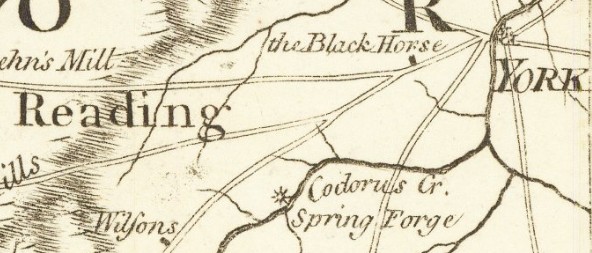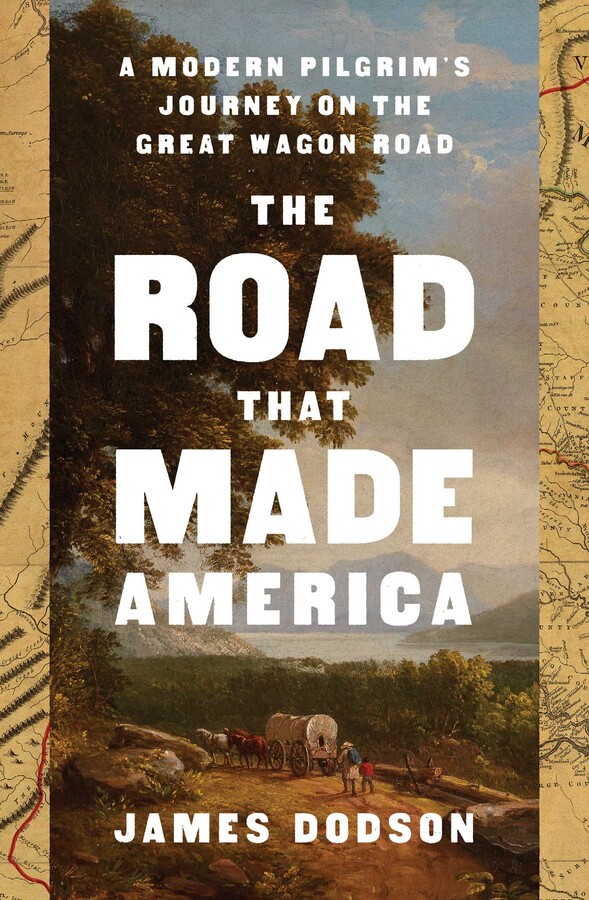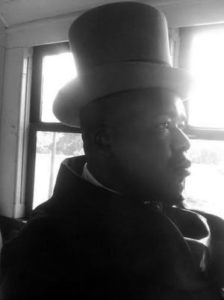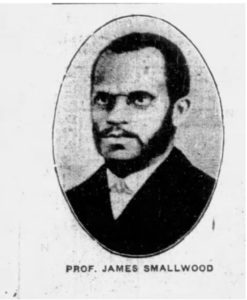It’s called ‘the Road that made America’
Settlers in York County reached this fork in the road
Route 116 cutoff, Route 30, West Manchester Township
The situation
Someone asked Jim McClure, one of WitnessingYork.com’s operators, about a quote attributed to him in James Dodson’s “The Road That Made America.”
The quote from Dodson’s just published book about the Great Wagon Road: “York was – and remains – a true melting pot, one of the nation’s most diverse places, a representative snapshot of what America would become as the frontier expanded.”
Did he really say that or believe that? He thought for a second because it’s been eight years since he said it. Then he said, yes, that’s about right.
The Great Wagon Road served as a major route for settlers in the 1700s and years afterward to travel south and west, from Philadelphia to Augusta, Georgia, and other points.
As the first county west of the Susquehanna, early York County’s land was largely a 1,400-square-mile blank green canvas awaiting settlement, reduced to about 900 square miles after Adams separated in 1800. It was a region that offered choices of where to settle and routes to travel for many – though not all, as we shall see.
Settlement and travels to the hinterlands came after 1730 when Wright’s Ferry opened. In York County, pioneers put down stakes in often tightly knit national groups, so the metaphor of a chef salad actually might work better for the county than “melting pot.”
York County historian June Burk Lloyd used a different metaphor of settlement: “Perhaps even better would be a stew – where some of the flavors blend together, but you still have some recognizable individual components.”
The point is that some people tag York County as the land of the Pennsylvania Dutch and stop there. Many Germans settled here, of course, but from York County’s earliest days, it also has been home to the Scots-Irish, English Quakers and perhaps a surprisingly diverse host of others.
Let’s consider the Hanover area, for example.
In his book “Digges’ Choice, 1724-1800,” Jan Bankert assessed one of the then most diverse areas: today’s Hanover region – Digges Choice: “We can see the variety of religious confessions of the settlers; and in this respect Digges’ Choice is important. Catholics, Reformed, Mennonites and Lutherans dwelt side by side in this area – one of the first times in Christendom when religious freedom gave rise to religious pluralism. Moreover, there is no evidence of friction.”
That mashup resembled Pennsylvania founder William Penn’s model, which eschewed state religious denominations as found in Massachusetts and Virgina. We should quickly add bonded and free African Americans for consideration, a group that largely lacked choice and agency. In 1783, 520 enslaved people lived in a county that stretched to the mountain west of today’s Gettysburg. In the 1790 U.S. Census, York County residents enslaved more Black people than any other county in Pennsylvania (499). It stood at No. 2 in freedman (837).
Now, let’s consider the southeastern corner of the county.
In the 1700s in the Peach Bottom area, American Indians, Scots-Irish, English, Maryland Catholics and Protestants, enslaved Black people and freedmen lived here. In the mid-1800s, the Welsh settled here to work the slate quarries. Over the years, numerous religious congregations worshipped mostly along Delta/Cardiff’s main street: German Methodist, English Methodist, two Presbyterian churches, two Welsh Methodist churches, A.M.E. Zion, Baptist and Nazarene.
Meanwhile, Penn State York’s David A. Latzko has found northwestern York County’s Huntingdon, Monaghan and Menallen townships as the most ethnically diverse in 1783.
“York County was fairly ethnically and economically diverse at the end of the American Revolution,” he wrote in the 2019 Journal of York County Heritage
As the first county west of the Susquehanna and hosting the main route for pioneers to take south and west, the county would experience – and serve as home to – scores of racially, ethnically and religiously diverse people. Some settlers stayed and farmed. Others settled for some years and then moved on either because of restlessness or families produced more children than land available to farm. Other pioneers passed right through. If they stayed, they likely would live near people of the same ethnicity.

More options for pioneers
As a crossroads, the county served as a place that offered yet another major choice. Should pioneers head to unsettled lands in the south by remaining of the main road west, through Adams County and turn south in Franklin County? Or should they turn south as a cutoff just west of York, the Route 116/Route 30 intersection today.
That latter trail, known as the Monocacy Road, part of the network that formed the Great Wagon Road, took them through Spring Grove, Hanover and Frederick on the Monocacy. They would then pass into the Shenandoah Valley via Harpers Ferry or some other route.
So York County served as a gateway for settlement, a frontier county for much of the 1700s, to be sure, but one that gave pioneers options or, really, opportunities. They could put down deep roots, stay a while or longer or simply pass through. And if word was that the route west was particularly crowded, they had the popular option of heading south through Hanover before leaving York County.
So with more reflection, James McClure thinks the assertion of York County as one of America’s great diverse places in the 1700s holds. He would give a stronger nod to our great port cities that received ships with diverse passengers and crews from around the world.
And he likes the chef salad or stew metaphors better than melting pot.
For an expanded version of this piece, please see: Early York County PA more ethnically diverse than many might think.
The witness
James Dodson devoted a chapter in his “Road That Made America” to York County and thus raised awareness of the Great Wagon Road in the minds of York countians – and Americans.
The North Carolinian, with a long family connection to this pioneers’ path, reflects on his work, York County and its people in this interview:
1. What caused you to undertake the project?
A. As I describe in the prologue, this was an adventure whose seeds were planted in 1966, age 13, when my father took my brother and me to shoot mistletoe out of a forest of white oaks surrounding his grandfather’s long abandoned homeplace. It was he who told us about our ancestors — Scots, German and English — who found their way to Piedmont North Carolina along the Great Wagon Road of the 18th Century. Thanks to my dad, a former newspaper man, my brother and I were veterans of Indian burial grounds and historic places, places where America began. That afternoon lit a small flame in my head to someday find and travel the “Great Road” of our ancestors. The notion that they were European settlers and immigrants who came down that road thoroughly possessed my imagination — only to rekindle six decades later!
2. What are two or three takeaways you learned about local communities along the Great Wagon Road of America.
A. Almost every person and place I visited for the book impressed me with their awareness of – and passion for — the Great Wagon Road and the importance of keeping its story alive. The two stops I found most memorable we York, PA, and Winchester, VA – both of which celebrate and preserve their abundant treasures of important American history in remarkable ways. York’s unique stature as the place where America’s first constitution was created (The Articles of Confederation) and its fascinating role in the Civil War are gems of history all Americans should know more about. I found York – and its people – utterly fascinating. Ditto Winchester, which keeps the story of young George Washington’s early military and budding political life alive. The town also played a pivotal role in the French & Indian, Revolutionary and Civil wars – kept alive by a passionate citizenry and a marvelous resource in the Museum of the Shenandoah Valley.

3. What were your impressions from time spent in York County? What worked out about the community. What needs work?
A. I was deeply impressed and delighted to learn about York’s important place in nearly three centuries of American life – including its vital roles in the creation of the nation’s first constitution and the city’s booming industrial age in the 20th Century that helped win WWII – highlighted by a boffo Industrial Museum I spend many hours exploring. Maybe most of all, I learned loving its generations of German and immigrant cultures that are still vividly part of the city’s life today. Learning how to tell a “real Yorker” and a wonderful History Night that was so well attended by friendly and passionate citizens who made my stop in York unforgettable. I loved the pride Yorkers share for their city. Its museums, history Center, and public spaces were terrific – including seeing my boyhood hero (whom I once had dinner with) Brook Robinson immortalized in bronze by the stadium. Must come back for a Revolution game someday soon!
Not surprisingly, York was one of my three favorite stops of the entire Great Wagon Road.

4. Tell us about one person (or persons) that standout from your visit to York County?
A. Without question it would be the two dozen or so folks I interviewed and spent time with over my three days in York learning about their love affair with the old city and it unique place in American history. As I said to my friend Jim McClure and others, I wish other American cities and towns had their own innovative “History Nights” and Town Square blogs in order to inform, educate and entertain their citizenry. Someone in York casually commented to me that “all history is personal – to someone.” I found that to be so true along the Wagon Road in general and York in particular.
5. Is there anything else you’d like your readers to know about your travels?
A. Sounds trite to say, but my travels changed my life and refreshed my outlook on America during these challenging times. I met and interviewed more than 125 different folks from every walk of life and (probably) political persuasion, though the subject of politics never came up once. What started out to be a traditional history of the road, morphed wonderfully into a story about the “flame-keepers” along the 800-mile road from Philly to Georgia who are keeping its story alive like never before. In that regard, my journey really became an intimate pilgrimage that stirred my emotions and awakened my soul.
West Manchester Township’s Peter Wolf House stands at the longtime intersection where Route 116 separates from Route 30, the Lincoln Highway. That fork was there during pioneer days, too.
The questions
- This article highlights the ethnic diversity that composed the original settlers of York County. If you’ve conducted your own genealogy, can you trace your own roots back to our county’s foundation?
- What other great intersections make up York County today? Are there forks that lead you to parts of York County that are rare compared to the rest of the county?
Related links and sources: James McClure’s “The Great Wagon Road ran through York, and a new book tells about its importance”; James Dodson’s “The Road That Made America: A Modern Pilgrim’s Journey on the Great Wagon Road “; Photos: W. Scull map photos, 1770, Library of Congress. Excerpt photo, York Daily Record.
— By JAMIE NOERPEL and JIM McCLURE



